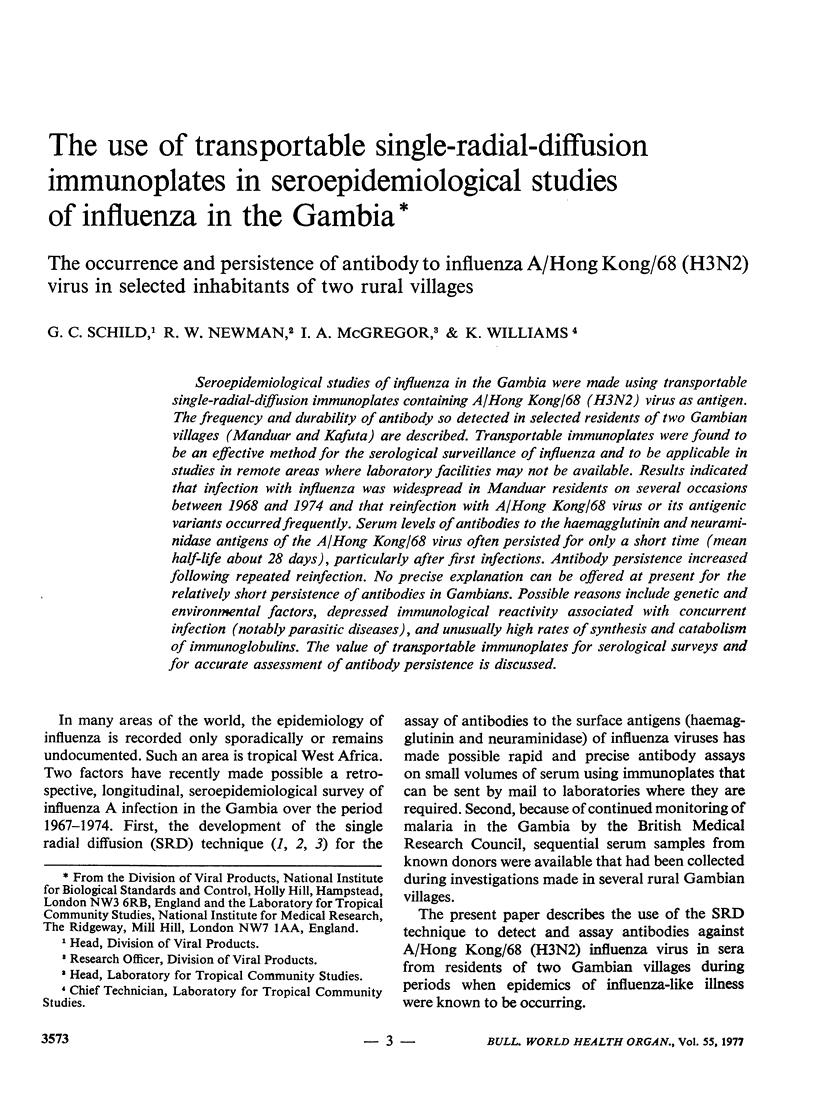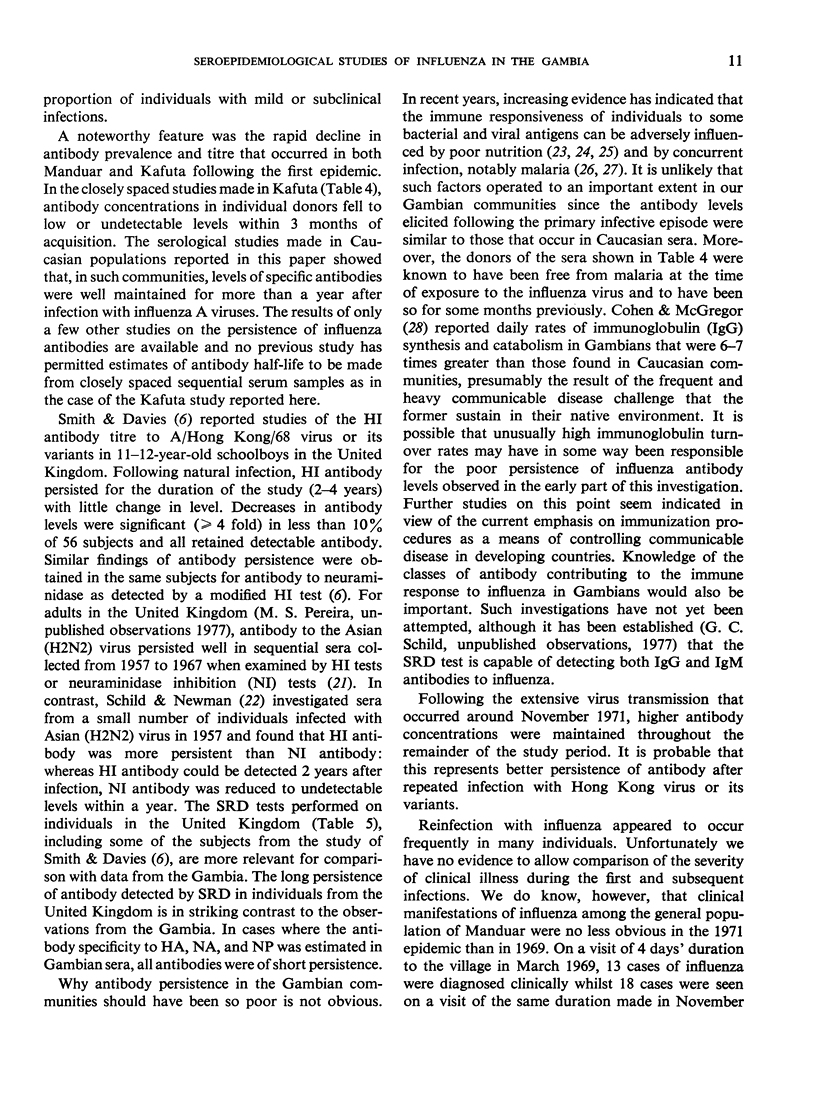Abstract
Seroepidemiological studies of influenza in the Gambia were made using transportable single-radial-diffusion immunoplates containing A/Hong Kong/68 (H3N2) virus as antigen. The frequency and durability of antibody so detected in selected residents of two Gambian villages (Manduar and Kafuta) are described. Transportable immunoplates were found to be an effective method for the serological surveillance of influenza and to be applicable in studies in remote areas where laboratory facilities may not be available. Results indicated that infection with influenza was widespread in Manduar residents on several occasions between 1968 and 1974 and that reinfection with A/Hong Kong/68 virus or its antigenic variants occurred frequently. Serum levels of antibodies to the haemagglutinin and neuraminidase antigens of the A/Hong Kong/68 virus often persisted for only a short time (mean half-life about 28 days), particularly after first infections. Antibody persistence increased following repeated reinfection. No precise explanation can be offered at present for the relatively short persistence of antibodies in Gambians. Possible reasons include genetic and environmental factors, depressed immunological reactivity associated with concurrent infection (notably parasitic diseases), and unusually high rates of synthesis and catabolism of immunoglobulins. The value of transportable immunoplates for serological surveys and for accurate assessment of antibody persistence is discussed.
Full text
PDF










Images in this article
Selected References
These references are in PubMed. This may not be the complete list of references from this article.
- Aymard-Henry M., Coleman M. T., Dowdle W. R., Laver W. G., Schild G. C., Webster R. G. Influenzavirus neuraminidase and neuraminidase-inhibition test procedures. Bull World Health Organ. 1973;48(2):199–202. [PMC free article] [PubMed] [Google Scholar]
- Jose D. G., Good R. A. Absence of enhancing antibody in cell mediated immunity to tumour heterografts in protein deficient rats. Nature. 1971 Jun 4;231(5301):323–325. doi: 10.1038/231323b0. [DOI] [PubMed] [Google Scholar]
- Schild G. C., Henry-Aymard M., Pereira H. G. A quantitative, single-radial-diffusion test for immunological studies with influenza virus. J Gen Virol. 1972 Aug;16(2):231–236. doi: 10.1099/0022-1317-16-2-231. [DOI] [PubMed] [Google Scholar]
- Smith A. J., Davies J. R. Natural infection with influenza A (H3N2). The development, persistance and effect of antibodies to the surface antigens. J Hyg (Lond) 1976 Oct;77(2):271–282. doi: 10.1017/s0022172400024712. [DOI] [PMC free article] [PubMed] [Google Scholar]



